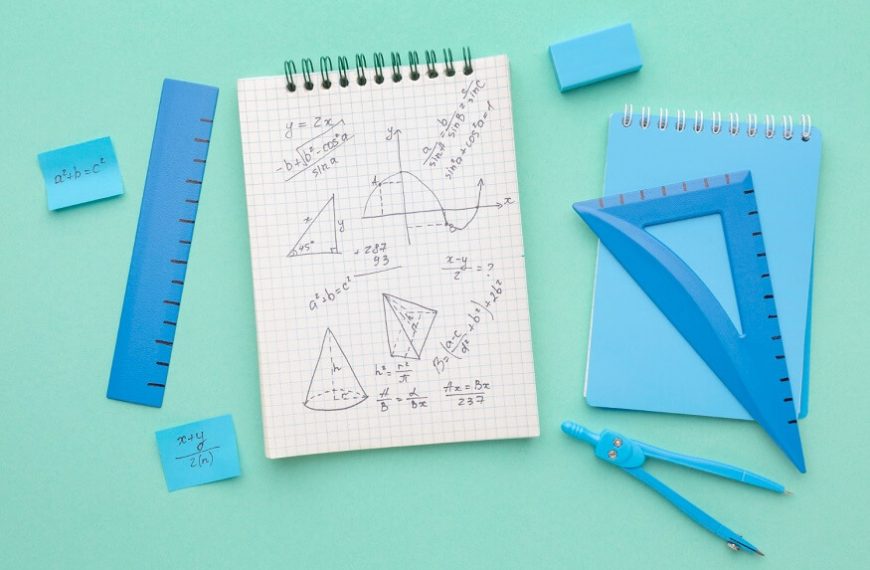If you have ever maintained a Journal, you know just how ‘therapeutic’ that process of jotting down your thoughts can be.
In today’s fast-paced existence, we all need a few moments every now and then, to ourselves. Some invaluable ‘Me-Time’, for lack of a better word.
The very kind of ‘Time That the process of Journaling entails.
Now imagine your Preschooler using a Journal, albeit with a twist. It’s a journal where they express their thoughts about ‘Math’!
You might wonder, Why might my child want a journal for a subject they struggle with in school? And therein lies the answer!
Learning Math need not be a ‘struggle’. There are several benefits of keeping Math Journals that we will uncover as this article unfolds. Further, we will explore some Math Journal examples, with a view to understanding just why Math Journals for Students, must form an essential part of Preschool Curriculum.
But first, a look at exactly what constitutes a Math Journal.
Math Journals: A Layman’s Guide
If you want to learn what a Math Journal is, the very first thing you need to know is this:
‘It is a Work in Progress!’
That is why it resonates well with little kids, who are just exploring the myriad, nuanced world of Mathematics. After all, Math is a subject that is marked by their continuous ‘progress’, over the many Days that they study it.
That being said, the most important reason for a child to keep a Math Journal is to be able to communicate their thoughts effectively about the subject of Math. A way that they can come to fathom how they are ‘individually’, as Learners. This is a valuable sense of Identity, that can be best garnered by them with that sacred ‘Space’ to set forth their ideas.
A space, none other than that ‘Math Journal!’
Math Journals: The Benefits
Math Journals must indeed be part of every Preschool Curriculum, and for good reason.
Presenting some of the most important benefits of Math Journals, for Elementary Students.
- Helps Sharpen their ‘Math Vocabulary’.
- Problem-Solving.
The subject of Mathematics has a vocabulary that is all its own! The only thing is, when there are discussions in class, kids don’t always get a chance to express said vocabulary, even if their hands are raised. Keeping a Math Journal, then, becomes a great way of helping them practise that Vocabulary!
Have a problem? No problem, it’s time for Problem-Solving! When children jot things down on paper, it helps them understand them better. Instead of their Speaking about the Math Problems that are posing a challenge to them in the classroom, get them to Write about them!
Math Journals for Students: Math Journal Examples
Now that we have a brief idea of what Math Journals are all about, along with the benefits they offer kids, why not take a look at some actual Math Journal Examples?
One really great feature of Math Journals lies in the fact that they can be used in a diverse variety of ways. This becomes all the more relevant for kindergarten children, who are just embarking on a quest to learn what is inarguably a most precious subject.
Presenting some Math Journal Examples for Preschoolers, that will help deepen their understanding of Mathematical Concepts.
Shorter and Longer
The key to getting children to understand Math, especially smaller kids, is to present things to them in a way they understand best. Like with the concept of ‘Measurement.’
To do
Get your child to draw a line with their pencil, in the middle of their notebook. On one side of the line they must add the subject heading ‘Shorter’, and on the other side, ‘Longer.’
Ask them to cut strips of paper of various lengths, from some chart paper. What they must do now, is paste all the strips that are ‘shorter’ than the line that has been drawn, under the ‘Shorter’ heading. Conversely, the ‘longer’ lines will find themselves in the ‘Longer’ section.
Counting Objects
Counting Objects is way more fun, when it involves the use of Pictures and of course, that Journal!
To do
Get your child to draw objects in their journal, of things that are commonly found in your house. Objects like chairs, tables, pillows and even water bottles.
They have to go around the house, counting how many of each item they can see. Then, they have to mark the result alongside the corresponding picture in their journal. For instance, they might have counted 10 chairs in all the rooms of your house, and 15 water bottles!
Sorting Money
If you ever had a coin collection back in the day, this one is sure to take you on a trip down Memory Lane!
To do
Hand your child an assortment of coins of various ‘kinds’ – 1 rupee, 5 rupees, 10 rupees and 50 paise. Teach them about the ‘values’ of the respective coins.
They must trace those coins in their Math Journals, before writing down the value of each of these ‘traced coins’, inside the respective sketches.
Now your children have to make a note of how many different ‘types’ of coins they have. They also need to calculate the total number of coins in the pile of coins you have given them.
At EuroKids, we are all for children maintaining Math Journals. We are of the belief that the process of daily Math Journaling, helps boost the Metacognition skills of kids. It helps them articulate their Thought Processes better, and effectively understand those key Mathematical Concepts.














